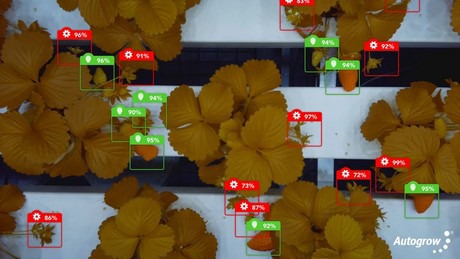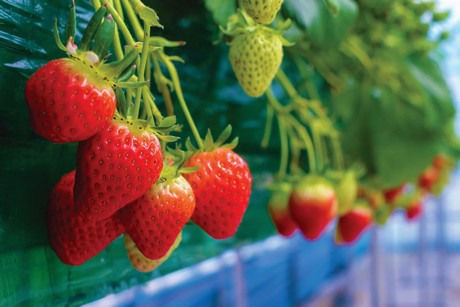Until very recent times, agriculture has relied exclusively on the knowledge and experience of farmers to make decisions on a daily basis that impact the outcome of production and yield. The primary inputs sound simple enough: seeds, soil, water, CO2 and light and you can produce crops. In fact, farming is anything but simple. The challenges are many and multi-variate in nature. When you poke past the surface, it’s wonderfully and woefully complex.
by Darryn Keiller
There are many ways that farming and agriculture can present themselves as data. As a framework, let’s use that of plant researchers; G x E x M.
Genetics x Environment x Management; which is the high-level framework of levers that can be pulled to optimize crop production.

Data type 1 - Genetics
We’re dealing with living organisms; like us they possess a life-cycle and a circadian rhythm. Genetics plays a fundamental role in successful crop production, as it has for the last 10,000 years that we’ve been an agrarian species. The biology of plants shares many common characteristics and yet many differences too; some are better suited to hot climates, others to cold ones, and so on.
Seeds are either planted directly into the soil, or they are first propagated in a nursery; then planted for growth. Depending on the plant, it will go through various stages of life; a vegetative stage, followed by flowering and fruiting if say a Strawberry or Tomato. Typically, to flower it must first be pollinated; to fruit - specific environmental conditions of climate must prevail.
Today, seed companies, breeders, universities and research institutes work to develop plant genetics, often to produce desired plant responses. If you look at this from the perspective of data and mathematical models, in this one dimension alone, the amount of data is vast. To navigate the labyrinth of complexity is why we formed collaborations with Ohio State University, University of Arizona CEAC and NZ Plant & Food Research.

Data type 2 - Environment
We live, we die. This is the dimension of environment. In the realm of planetary theory, ideal planets for the human species; class M plants, reside in what Astronomers call, the ‘Goldilocks zone’ neither too hot, nor too cold but just right. This is the same for plants. Many are resilient, they can adapt to some extent through their physiological responses honed over hundreds of thousands or millions of years, through genetic adaption/mutation, or organically, through intentional cross-breeding or genetic manipulation using lab-based engineering, including more recent gene-editing tools such as CRISPR.
In farming tradition, the environment includes the soil the seed is planted in and the micro-climate that the farmland is situated in; this includes the topography and the altitude. Farmers through experience and knowledge (handed down through the generations), have strived to identify the best soils and locations for farm production, including access to water for irrigation and situated in the best place for sunlight for photosynthesis. The farmer’s friend and their enemy is the weather. Every morning the first thing any farmer does, is look to the sky in order to judge whether there would be rain, or not; sun or not. And make decisions accordingly.
In the last decade, great strides have been made with applying climate and weather data to provide greater predictability and support better decision making. As the technology has improved so has the quality and real-time nature of the data. It began with geospatial mapping using aircraft and helicopters, an expensive and time-intensive process that often yielded the required information around land and soil, too late.
Tools for analysis; crop, soil and water analysis were also limited. In the last decade, Satellite and drone technology has transformed the landscape but not by itself. It coincided with new data platforms and software for analysis. Storm events, wind direction and speed, lightning strikes are all monitored and delivered to the farmer's mobile device or tractor cabin.
Again, vast amounts of data, analysed and now transformed through more advanced data models in conjunction with machine and deep learning methods. In the world of CEA, it’s Autogrow’s domain expertise.
Data type 3 - Management
It’s not as simple as less inputs, more outputs. Optimizing efficiency is an objective so is better results. And this encompasses a raft of elements: Choice of farming methodology e.g. soil-based production at scale using mechanization, organics or hydroponics. Farming practices e.g. depth and breadth of the farmer's knowledge and experience; management practices for integrated pest management (IPM) and pathogens. Including best practices and solutions e.g. pesticides, herbicides, alternative biologic solutions or simple, traditional solutions e.g. companion planting. Pruning of vines, harvest cycles and the list goes on.
Farming is a 365 x 24 x 7 operation, when we’re sleeping, the crops are still growing. Experienced management and skilled farm labor are critical success factors for farming. Across all the aforementioned - the quality and timeliness of farm management vary significantly and as a result, so do the results; whether measured as optimal management of resources; sustainable farming practices of maximizing outputs towards crop yield, quality and timeliness of delivery to market. Labor, materials, infrastructure, capital, financial management, harvesting, etc. all produce vast amounts of data.
If you get G x E x M right, and you collect the data, you have the winning formula to be able to reproduce the same high-quality crops regularly. That’s a bonus for any grower.
 For more information:
For more information: